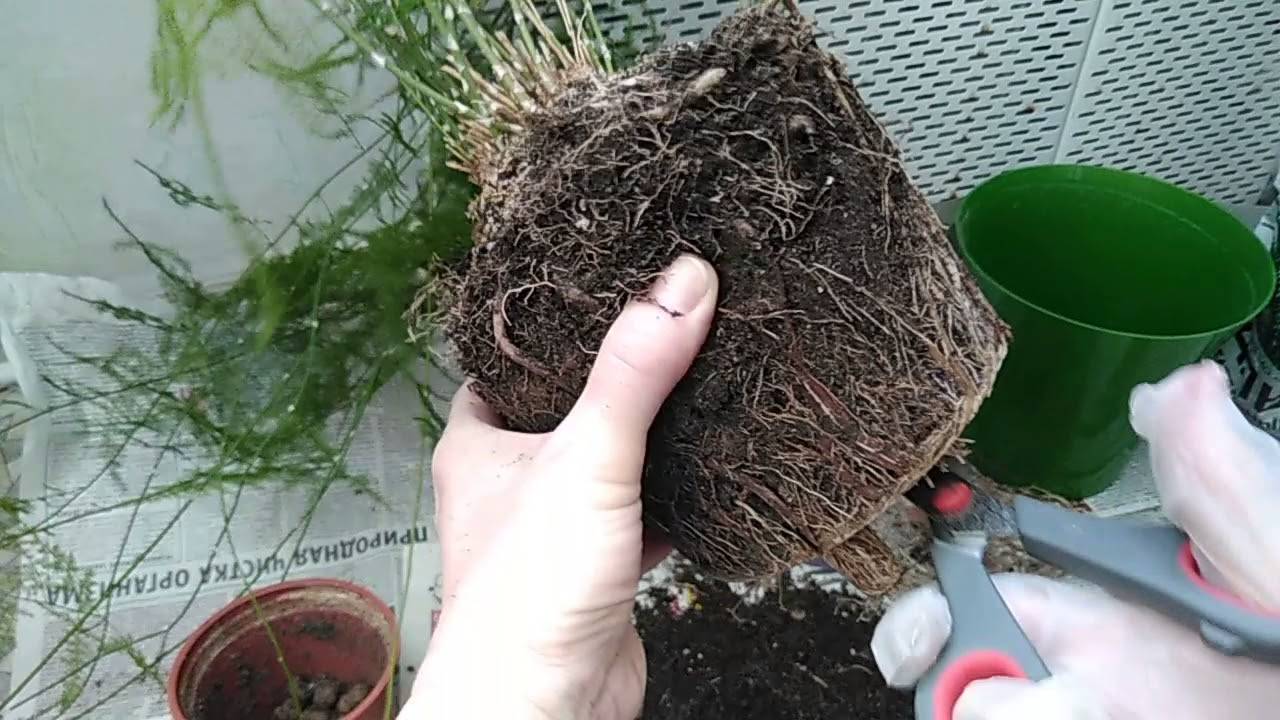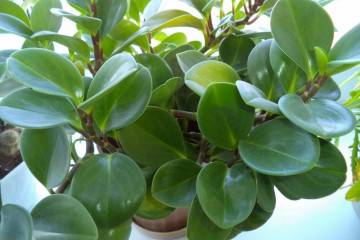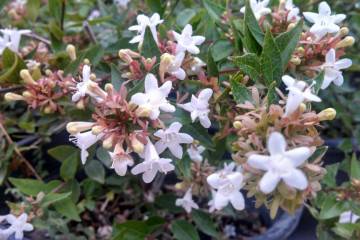Asparagus pinnate - home care
Content:
The hearts of domestic flower growers have long and firmly won the feathery asparagus. With the help of this plant, various expositions are created and an atmosphere of comfort and well-being is conveyed. A plant with an unusual leaf shape is able to cleanse the energy of the house from negative emotions and help cope with depressive conditions.
Description and characteristics of asparagus pinnate
Asparagus pinnate is classified as a perennial evergreen. The stems of the bush are thin and curly. If you build supports for the plant, then it can grow up, and if this is not done, then the stems will hang like a vine or fall down in a cascade.
The shrub belongs to the Asparagus family. Outwardly, the shoots of the plant resemble bird feathers. The stems grow up to 150 cm in height, they are highly branched. Flowers are formed mainly in the axils of the foliage. They are very small racemose or solitary.
Common varieties
The genus Asparagus includes over 300 species. They are all similar in shape. The main indoor subspecies include:
- Meyer is a small shrub that reaches a height of no more than 50 cm. The structure is branched;
- Sickle - a semi-shrub with curly stems. With proper care and creating optimal conditions, it can grow up to 7 m;
- Sprenger. The shrub reaches a height of 50 cm. The stems of the plant are branched. It blooms with snow-white miniature flowers, after which oval burgundy fruits appear on the bush.
Healing properties
Asparagus plumosus, aka feathery, like all other varieties of this shrub, is rich in mineral salts, flavonoids, vitamins and amino acids. In Chinese medicine, this plant has been used for a long time to treat many diseases.
Dried roots are used for therapeutic purposes. They have antibacterial, antiseptic, anti-inflammatory and diuretic effects. They also treat pulmonary and gastric diseases.
Among other things, with the help of the root of this plant, diabetes mellitus, migraine, nervous system, and multiple sclerosis are treated. The roots help cleanse the human body of toxins.
Briefly about the history of appearance
Asparagus Plumosus appeared over three thousand years ago. In ancient times, it was this plant that was considered divine. The Egyptians were convinced that asparagus has a direct impact on the continuation of the human race.
Features of flower care at home
When growing a shrub at home, no special manipulations are required in the care process. All recommendations are quite simple and straightforward. The most important thing is to protect the plant from hypothermia and drafts. It is also imperative to monitor the volume of the pot, as the shrub grows very much in size as it develops.As soon as there is little space for a flower, it must be transplanted immediately.

The rules for caring for asparagus pinnate are simple and understandable, so even a novice florist can handle it.
Temperature
In order for the flower to feel comfortable, it is necessary to keep the temperature in the room no more than 25 ° C in spring and summer. In winter, it should vary from 14 ° C to 16 ° C.
Lighting
When growing feathery asparagus at home, care should be in proper lighting. Since the flower is very fond of light, it is best to place it on windowsills from the east or west side. At the same time, it is strictly forbidden to allow direct sunlight to fall on the shrub. It is recommended to take the flower out into the air only in the warm season.
Watering
The shrub is very fond of moisture, so you need to water it regularly. In the warm season, watering must be done at least three times a week. With the onset of cold weather, the number of water procedures is reduced. It is important not to allow the soil to dry out during this period of time.
Spraying
In addition to the usual moistening, it is recommended to spray the plant systematically from a fine spray bottle. This helps remove dust and gives the flower a vibrant look. For spraying, it is recommended to use settled water at room temperature.
Humidity
Wild-growing asparagus prefers places with high humidity levels. It is these conditions for development that must be created at home. To create an optimal level of humidity, you can put ionizers or systematically spray the flower.
Soil and dressing
When growing a plant at home, it is recommended to feed it twice a year - in spring and summer. Universal fertilizers are best suited for this. For planting, experts advise using a mixture of turf, sand, peat and leafy soil.
When and how it blooms
If you provide the plant with proper care and comfortable growing conditions, then it will bloom. Small white or light beige inflorescences appear in the leaf axils.
Pruning
Asparagus does not need pruning. Every grower who grows this plant should know that pruning is deadly for him. But this does not mean at all that it is impossible to remove bare and old shoots that interfere with the normal development of young branches. Such activities are carried out as needed.
How does pinnate asparagus reproduce?
The cobweb, as the people call the flower, propagates by seeds, cuttings and rhizomes. To propagate a flower with seeds, they must be purchased at a specialized store. The simplest way of reproduction is considered to be the division of the rhizome.
Germinating seeds
If you plan to propagate a flower by seeds, then for this, the planting material must first be sown into moist soil in winter until March. The seed pot should be placed in a room with an air temperature ranging from 21 ° C to 22 ° C. Seeds need to be systematically sprayed and ventilated. The first shoots appear in about a month. In early June, the seedlings are transplanted into individual pots.
Rooting cuttings
The process of propagation by cuttings is considered the most difficult method of propagation, since the plant takes root very poorly. For such reproduction, it is important to choose the right healthy and strong shoots, cut cuttings from them, and then place them in the prepared soil. Then the cutting should be placed in a warm room, systematically moistened and ventilated, waiting for rooting.
Rhizome division
The shrub can be propagated by dividing the rhizome.To do this, during transplantation, you need to divide the plant into several parts and plant each in a separate pot.
Transfer
Shrub transplants are very painful. They are carried out only in exceptional cases: after purchase and if the plant pot becomes small.
Possible growing problems and diseases
Asparagus pinnate is a plant with good immunity, so most diseases and pests are not afraid of it. Problems arise mainly from improper care. In such cases, the shrub can be affected by aphids, spider mites or thrips. When they appear, you need to cut off the affected areas and rinse its stems with warm water.
The stems can fall off and turn yellow as a result of the plant being in unfavorable conditions. High temperatures have a detrimental effect on him.
Signs and superstitions
Not only for its exotic and unusual appearance, asparagus fell in love with flower growers. The plant is believed to have magical properties. Many argue that it can neutralize negative energy in the room, defuse the situation, extinguish conflicts and relieve tension after a hard day.
Despite many positive aspects, there is also an unpleasant belief. It has long been believed that if an asparagus suddenly dies for no apparent reason, then a similar fate will soon befall someone living in the apartment.
Asparagus pinnate is rightfully considered an amazing and beautiful plant. The flower has long attracted the attention of both experienced and novice florists. Moreover, it is very easy to care for him. It is enough to follow the minimum rules, and the shrub will delight you with an attractive and healthy appearance for many years.


















